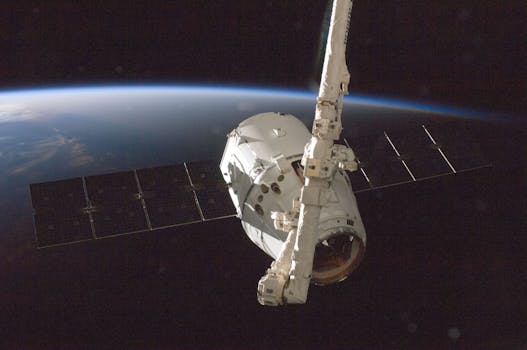From Geostationary to Low Earth Orbit: The Evolution of Satellite Telecommunications in 2023 – Satellite Telecommunications

Satellite Telecommunications From Geostationary to Low Earth Orbit: The Evolution of Satellite Telecommunications in 2023
Satellite Telecommunications has undergone a significant transformation in recent years, with a notable shift from Geostationary Orbit (GEO) to Low Earth Orbit (LEO). This evolution has revolutionized the way we communicate, enabling faster, more reliable, and cost-effective connectivity. In this article, we will delve into the history of satellite telecommunications, the advantages and disadvantages of GEO and LEO, and the current state of the industry in 2023.
History of Satellite Telecommunications
The first commercial communications satellite, Intelsat 1, was launched in 1965, marking the beginning of the satellite telecommunications era. Initially, satellites were placed in Geostationary Orbit, approximately 36,000 kilometers above the equator, where they could maintain a fixed position relative to the Earth’s surface. This allowed for continuous communication with a specific region, making it ideal for broadcasting, telecommunications, and weather forecasting. However, GEO satellites have some limitations, such as high latency, limited bandwidth, and high costs.
Geostationary Orbit (GEO) vs. Low Earth Orbit (LEO)
In recent years, the satellite industry has witnessed a significant shift towards Low Earth Orbit (LEO), which offers several advantages over GEO. LEO satellites orbit the Earth at an altitude of approximately 160 to 2,000 kilometers, resulting in lower latency, higher bandwidth, and reduced costs. LEO constellations, such as those developed by OneWeb, SpaceX, and Amazon Kuiper Systems, aim to provide global coverage, enabling high-speed internet connectivity, IoT applications, and real-time communication services.
Current State of the Industry in 2023
In 2023, the satellite telecommunications industry is experiencing rapid growth, driven by the increasing demand for high-speed connectivity, the proliferation of IoT devices, and the need for resilient communication networks. The shift from GEO to LEO has opened up new opportunities for satellite operators, manufacturers, and service providers. Companies like SpaceX, Amazon, and OneWeb are investing heavily in LEO constellations, while traditional GEO satellite operators are adapting to the changing landscape by launching new satellites and developing innovative services.
Challenges and Opportunities
Despite the many advantages of LEO satellites, there are still challenges to be addressed, such as interference, congestion, and regulatory issues. The increasing number of satellites in LEO also raises concerns about space debris and the environmental impact of satellite launches. Nevertheless, the opportunities presented by the evolution of satellite telecommunications are vast, enabling new use cases, such as satellite-based 5G networks, precision agriculture, and environmental monitoring. As the industry continues to evolve, we can expect to see significant advancements in satellite technology, leading to improved connectivity, increased efficiency, and new applications that transform the way we live and work.



